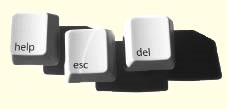Archive for September, 2008
The sea so open
Issue 3/2008 | Archives online, Fiction, poetry
Poems from Delta (Teos, 2008). Introduction by Jukka Koskelainen
Like wave-polished stones
we sit on a seashore rock, shading our eyes
from the sun, each other, the deltoid sails, the water.
You ask nothing more,
you know the sum of the angles of a triangle,
that you have your sides, as I do
sometimes they near each other
as if to penetrate each other, cut
a hole in the landscape.
A seagull settles on a crag,
without a glance aside, you’re up and disappear
from my side.
Sails, other sails.
the sea so open and the sky open. More…
The mistake
Issue 3/2008 | Archives online, Fiction, Prose
A short story (‘Erehdys’, 1956, last published in the collection Lukittu laatikko ja muita kertomuksia, ‘A locked box and other stories’, WSOY, 2003). Introduction by Markéta Hejkalová
My feet are smarter than my head. On an April night in Naples they carried me along the Via Roma past the royal palace and the giant illuminated dome of the church. The people of Naples walked up and down the immortal street like the cool of evening, looking at each other and at the brightly lit display windows. I had nothing against that, but at the comer of Via San Brigida my feet turned to the right. The snow-cold breath of my homeland radiated toward me from Saint Bridget Street.
When I had turned the corner I could see a restaurant window still lit, with its fruit baskets, dead fish and red lobsters. The most hurried diners had already finished their meals. I stepped into the long dining room of the restaurant, the sawdust on the floor stuck to my shoes, a frighteningly icy stare pierced me from behind the counter, but I gathered my courage and whispered bravely, ‘Buona sera, signora.’ More…
Works in progress
Issue 3/2008 | Archives online, Essays, On writing and not writing

Olli Jalonen’s latest novel, 14 solmua Greenwichiin (’14 knots to Greenwich’, 2008), was 19 years in the making. He ponders the joys and tribulations of such a slow maturation
When you spend years or decades writing the same book, what is the drive, passion or compulsion that keeps the cogs turning through the quieter months? Or are the months when you don’t write silent at all? Isn’t it the case that the core of a text or a book is born out of a state of peaceful nothingness?
More often than not, the most important ideas, the strongest details and the sturdiest structures of the art of writing come into being somewhere other than at the computer keyboard. One of the greatest benefits and pleasures of a writer’s work is carrying that work around in mind and body. At these times the writing machinery is whirring, quietly, calmly, freely and unpressured. More…
Portraits and bagatelles
30 September 2008 | Fiction, Prose

Kaarina Valoaalto. Photo: Tammi.
Soila Lehtonen on Kaarina Valoaalto’s new collection of short prose
In Kaarina Valoaalto’s prose ‘the river, made wild by a storm, gallops, foaming at the mouth, down between the stays of the street banks and into the sea’ and ‘the fly is a classic’: ‘its buzz sounds the cycle of the year and all of the scales of feeling. A fly brings together agrarian and urban culture…. When I hear it, I believe I’m alone in the cabin of a sailboat, anchored to the bottom of a bay where terns and seagulls call out on the gleaming blue of the open sea and no there is no coffee because no one has bothered to make it’. More…
Dog days
30 September 2008 | Fiction, Prose
A story from Avantgarderob ja muuta irtaimistoa (‘Avantgarderobe and other moveables’, Tammi, 2008). Introduction by Soila Lehtonen
The air between the old dog’s teeth cuts like a crosscut saw.
There is a furious rhythm in her bark.
She’s been left out of the moose-hunting pack.
The more decrepit her body is, the stiffer her joints, the more her bark is filled with passion for the hunt. But she shows no sign of nostalgia, she’s not hankering after some long-ago days of glory, when she was the leader of the pack. This is clearly a bark of command. Even from kilometres away, she tells the other dogs where to go — not that way — a little more to the left — behind that stump, you blockheads! More…
What about me?
30 September 2008 | Fiction, Prose
Extracts from the novel Mitä onni on (‘What happiness is’, Otava, 2008)
I was lying on the sofa watching Sports Roundup. The ski jumpers were flying at Zakopane. When I go one day, I want the cantor to play the Sports Roundup theme on the harmonium and the pallbearers to look on like skiing judges down into the pit.
‘I have an idea,’ Liisa said, sitting down at the other end of the sofa. I muted the television and adopted a focused expression. I focused on thinking about my expression.
‘Finnish happiness,’ Liisa pronounced solemnly. ‘I’ll illustrate, and you write.’
‘A book again,’ I said and turned the sound back on. They were reading off the women’s basketball scores now. Liisa waited patiently. I was disarmed enough by this that I turned the television off. More…


